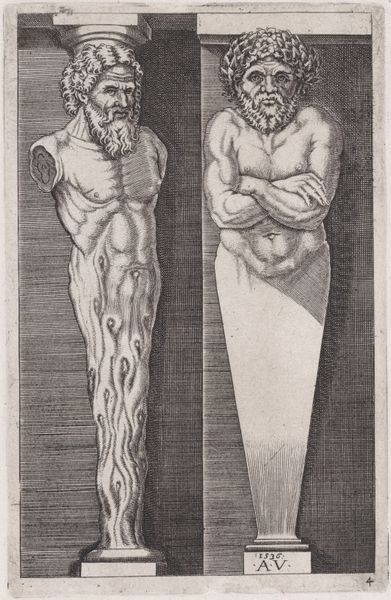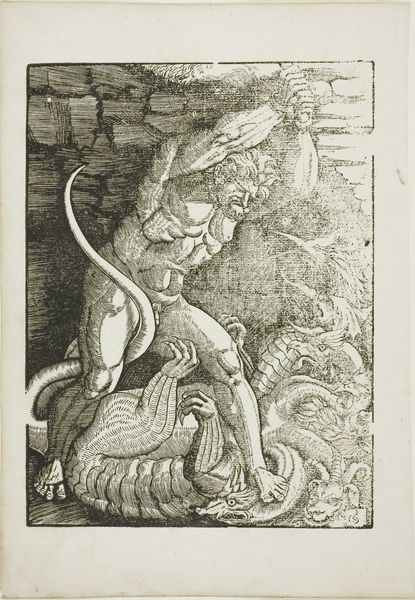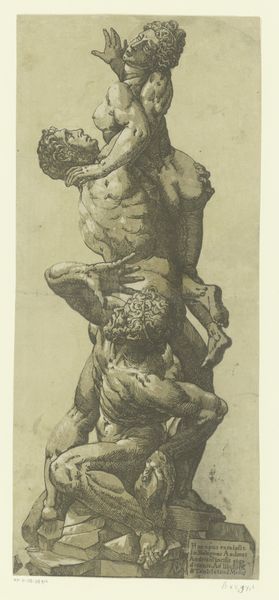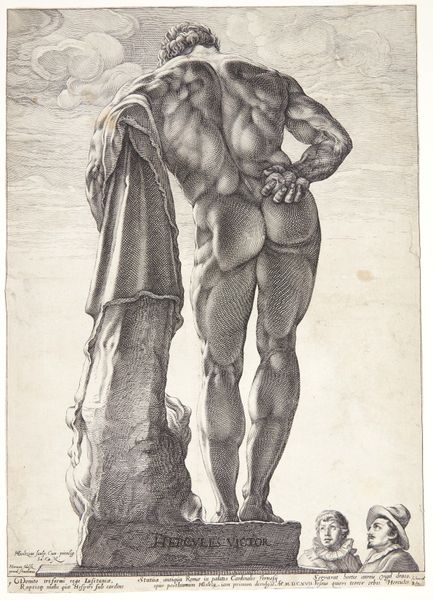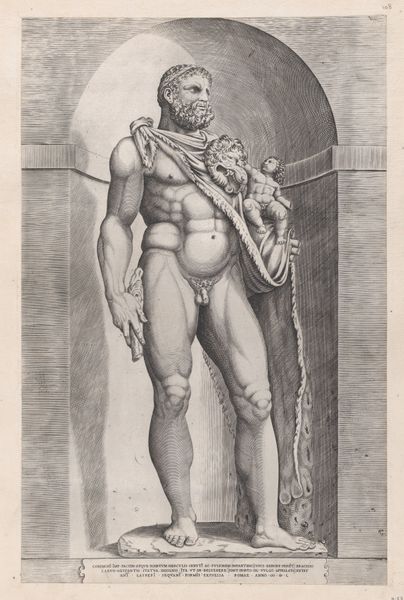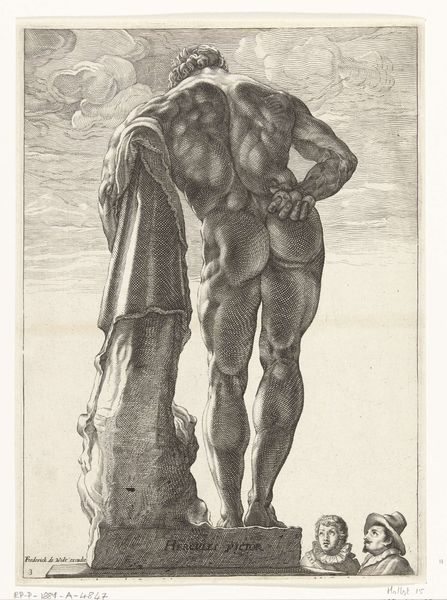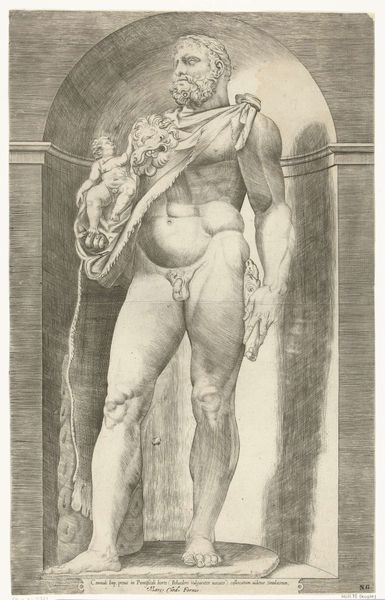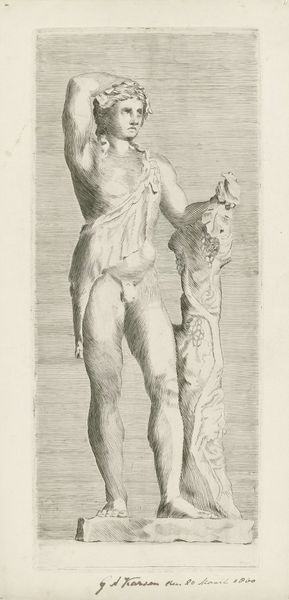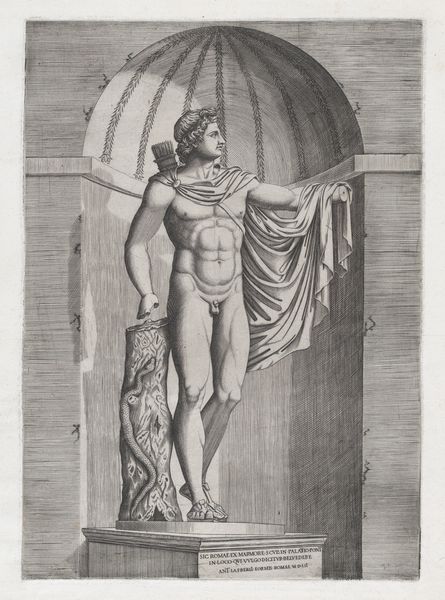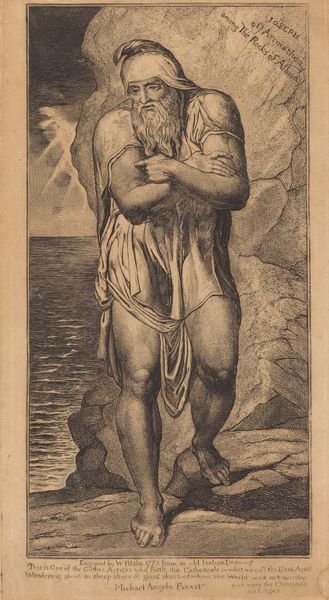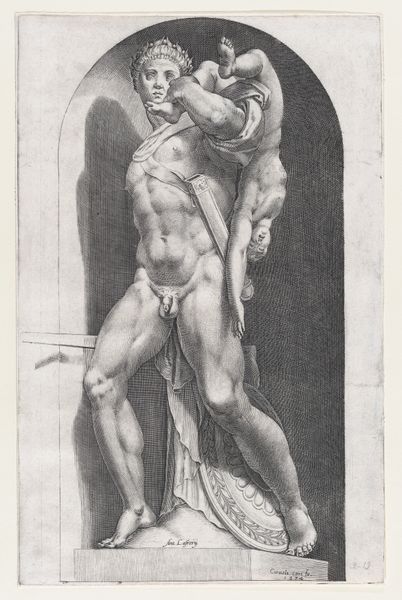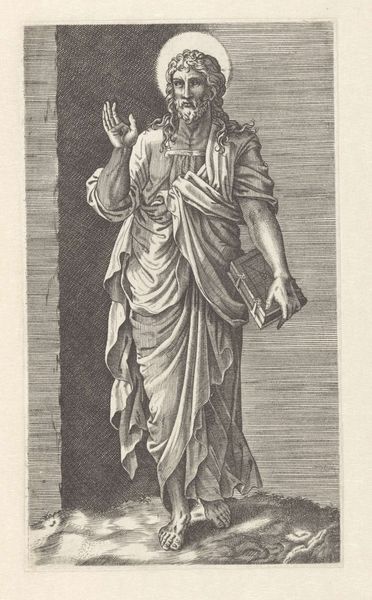
drawing, print, engraving
#
portrait
#
drawing
# print
#
figuration
#
11_renaissance
#
line
#
italian-renaissance
#
engraving
Dimensions: 8 1/16 x 4 15/16 in. (20.4 x 12.5 cm)
Copyright: Public Domain
Agostino Veneziano created this engraving, "Two Men from 'The Hermae'", around 1536. It captures a moment in the complex cultural exchange of the Renaissance. During this period, there was a renewed interest in classical antiquity, yet this revival was often filtered through the lens of contemporary concerns and biases. Herms, or Hermae, were stone pillars topped with sculpted heads, often of gods or philosophers. While they originated in ancient Greece, Veneziano's print reflects the Renaissance fascination with reinterpreting these forms. Consider how the artist presents these figures. One is a classical nude, the other draped in what might be perceived as "oriental" garb. This juxtaposition speaks to the era's growing awareness of cultural difference, but also to its inherent power dynamics. It invites us to consider how the Renaissance constructed its understanding of both the classical past and the non-European "other," and how these constructions shaped identity and knowledge.
Comments
No comments
Be the first to comment and join the conversation on the ultimate creative platform.
